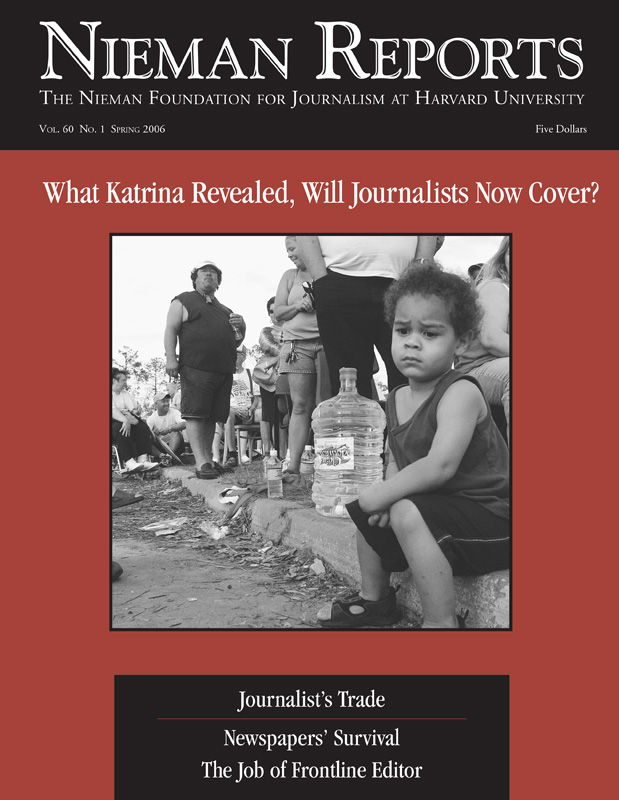“The first accurate description we heard of the storm’s wrath was told to a Sun Herald reporter in four words: ‘Your city is gone,'” writes Stan Tiner, executive editor of the Sun Herald in Biloxi, Mississippi. The storm was Hurricane Katrina, and in a book, “Katrina: 8 Hours That Changed the Mississippi Coast Forever,” published by the Sun Herald, words and images by journalists in South Mississippi convey a sense of what once was and what is today. Tiner describes this book (“not only a story of tragedy and devastation [but] one of survival …”) and how the Sun Herald regrouped in the wake of Katrina. “In this very chaotic environment,” he writes, “… the newspaper continued to make extraordinary efforts to see that the news reached readers.”
As seen through the eyes of Dan Kennedy, who teaches journalism at Northeastern University and authors Media Nation, a Weblog, “The Death of Media: And the Fight to Save Democracy,” by Danny Schechter is “a small, elegantly packaged call for reform of what he has dubbed ‘the mediaocracy.'” This is defined by Schechter as “a growing symbiotic relationship between increasingly interlocking media elites and their political counterparts … a political system tethered to a media system.” Kennedy connects what Schechter writes about with what is happening in today’s “toxic media environment.”
Maria Henson, deputy editorial page editor of The Sacramento Bee, explains how the book “Press Gallery: The Newspaper in Modern and Postmodern Art” reminds “us that what many of us do for a living continues to inspire artists to paint, to comment, to build and to assemble, often with scraps of news clippings, metal and dirt on canvas, and occasionally a crowd.” Despite the lack of shared cultural ground among the artists featured in this book, Henson writes that “newspapers have become a shared tool of storytelling across countries and eras.”
The book “The KGB File of Andrei Sakharov” provides journalists such as Murray Seeger, who once covered the Soviet Union and reported about this famous dissident, with a revealing look at “how the activities of the mild-mannered, brilliant physicist Andrei Sakharov preoccupied the ruling Communist Party Politburo for more than two decades until his death in 1989.” Seeger takes us back to this era as he explains how dissident activities were covered by the Western press and also describes how Sakharov’s use of “international communications to plead his cause” likely saved him from being “locked up in a mental institution and forgotten like many lesser-known dissidents.”
Seth Lewis, a Miami Herald editor who recently spent time in Spain as a Fulbright Scholar, reflects on how well bilingual journalism, as practiced in several regions of Spain, is working for newspapers that are publishing their content in hybrid mixtures of the regional and national language. And he assesses how readers react when presented with these choices. Lewis looks, too, at comparisons with the different way in which U.S. newspapers approach their bilingual markets. “Spain is a case study and a cautionary tale — a lesson in bilingual innovation but also a warning that such efforts, however well-intentioned, don’t always translate into readership gains,” he writes.


